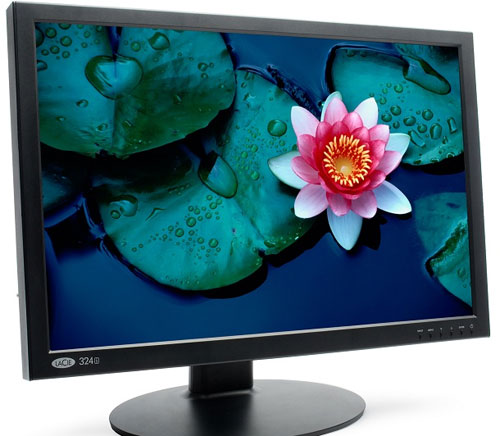Useful tips when choosing to buy LCD TVs
With the price falling, today's equipped with an LCD TV is no longer too difficult for people. However, choosing a good 'quality' LCD model is not easy.

The most interesting thing when buying an LCD monitor is the display color of the screen. The more clear and natural colors, the better the image quality is shown. To try out colors, you can turn on the fruit image, thereby viewing the colors displayed naturally and harmoniously in the colors. Or you can switch to natural and human images to see if the shades of gray, white and black display are sharp.
In addition to the display colors, you also need to rely on the specifications to evaluate the quality of an LCD monitor. Specifications include frame, resolution, brightness, contrast, response time, viewing angle and input of the LCD monitor.
Frame and resolution
Frame is the display size of the screen. The LCD screen has many frames for you to choose from depending on your personal needs of 32 inches or more.
Screen resolution is also an important factor to assess the visibility of images. The higher the screen resolution, the sharper the image displayed.
But high-resolution screens are enough to produce high-resolution images because this depends on the quality of the video source. Usually to enjoy a high-quality movie on a Full HD standard TV, you have to use the head and disk in FullHD standard.
In fact, the usual TV signals viewed on HD screens give better quality than on normal screen types because it shows all the defects of this signal.
Contrast and response time
Contrast ratio is the difference between the strongest white light and the darkest color on the screen. A high-contrast LCD screen will produce better image colors. The details will appear more clearly.
LCD monitors on the market have a contrast ratio of 60,000: 1 to 100,000: 1. At the very least, you should choose a type with a contrast of 60,000: 1 or more.
Response time, also known as response time (calculated in ms) is equally important. The lower the level of time, the faster the image is converted, whereas if the time is too high you will be able to observe the change of pixels, and this makes you feel uncomfortable as if there is a shadow. ghost 'when pixels change slowly.
However, with modern technology, all vendors advertise their devices with a response time of 2ms, 5ms to 8ms, which helps images be converted quickly and efficiently.
Viewing angles and communication standards
The viewing angle of the LCD is determined vertically and horizontally, however regardless of the screen's parameters, you only see the best image when sitting in the front. A screen with a 160-degree vertical / horizontal viewing angle will suffice for a few more people to see the content clearly.
However, the viewing angle is not the most important factor to choose LCD monitor because most users are sitting directly on the screen, although sometimes it may be a bit off but it does not cause difficulties for the types. Modern LCD.
The last parameter you need to consider is the screen input. Most LCD monitors have D-SUB and DVI ports. DVI is a port that transmits digital signals directly from a computer to an LCD monitor without having to switch to an Analog signal such as a D-SUB port (VGA).
The DVI port for smoother display of images, the signal transmitted from the computer to the screen is faster than the D-SUB port.
However, if your computer's graphics card does not meet DVI standards, you can also convert DVI to D-SUB port via DVI to VGA adapter. In addition, high-end LCD monitors also include HDMI ports for you to watch movies in HD and Full HD.
You should read it
- Experience choosing to buy the best computer monitor
- What is contrast?
- Adjust screen resolution on Windows 10/8/7
- How to Adjust Colors on an LCD Monitor
- How to Reduce Computer Eye Strain by Switching to High Contrast (Windows 7)
- How to fix 'Input Signal Out of Range' error on Windows
- What is 16K resolution?
- Should I choose an ultra-wide monitor or a dual monitor setup?
- Beautiful Analog photo correction recipe
- 11 best digital DAC converters for Hi-Res audio
- How to Change the Resolution in Windows 8
- 12 best free clock widgets for Android






 Tips for choosing the right monitor for Photoshop users
Tips for choosing the right monitor for Photoshop users Tips for choosing good watermelon: experience from a long-time farmer
Tips for choosing good watermelon: experience from a long-time farmer Factors to consider when choosing a CPU for graphics
Factors to consider when choosing a CPU for graphics 5 Tips for Choosing the Right Developer
5 Tips for Choosing the Right Developer Tips on Choosing New Online Casinos in the Irish Market
Tips on Choosing New Online Casinos in the Irish Market Expert Tips For Choosing The Right Solar Lights
Expert Tips For Choosing The Right Solar Lights